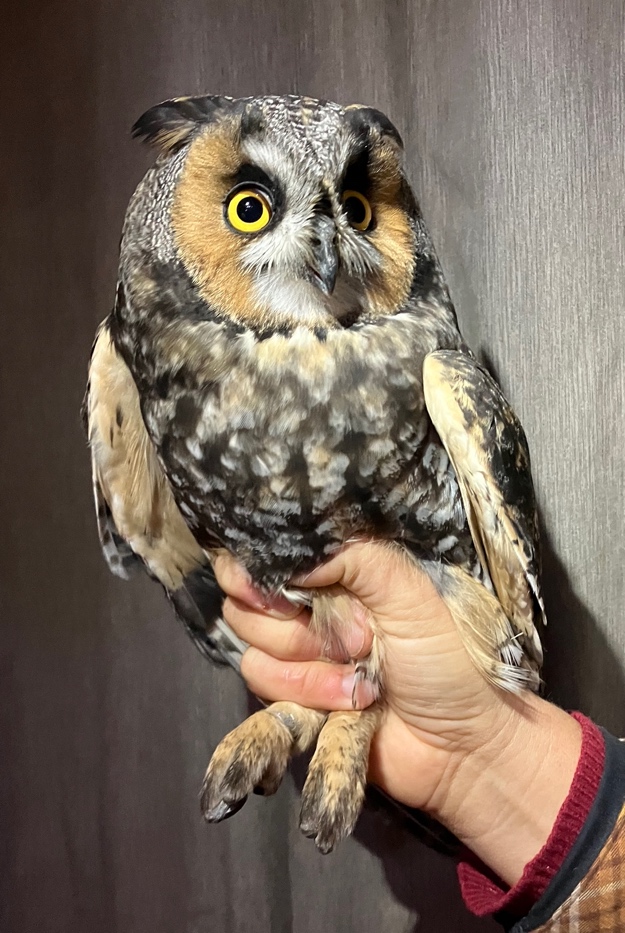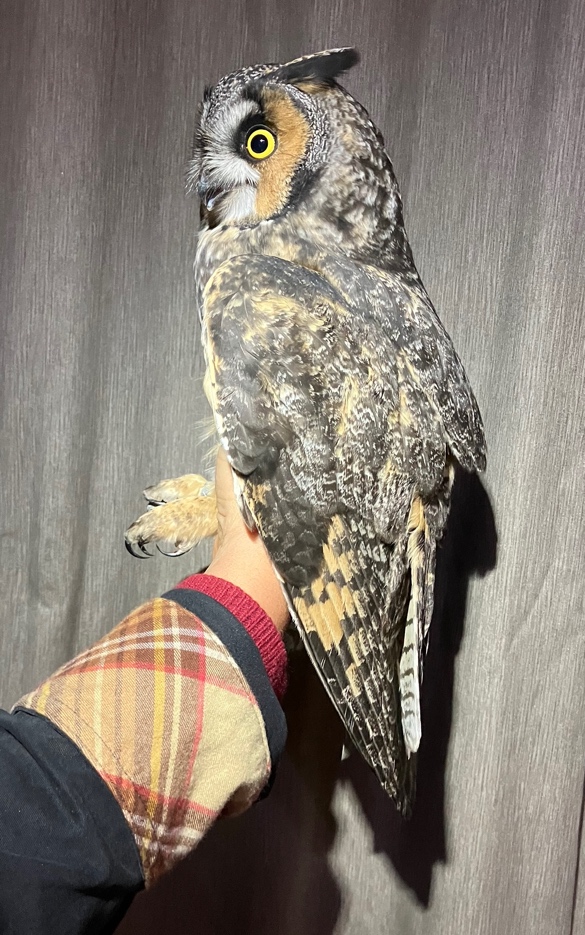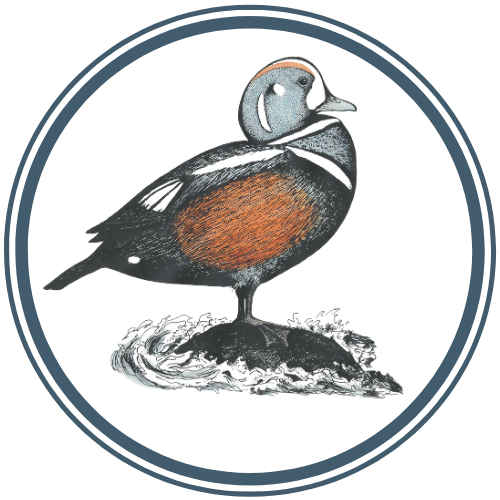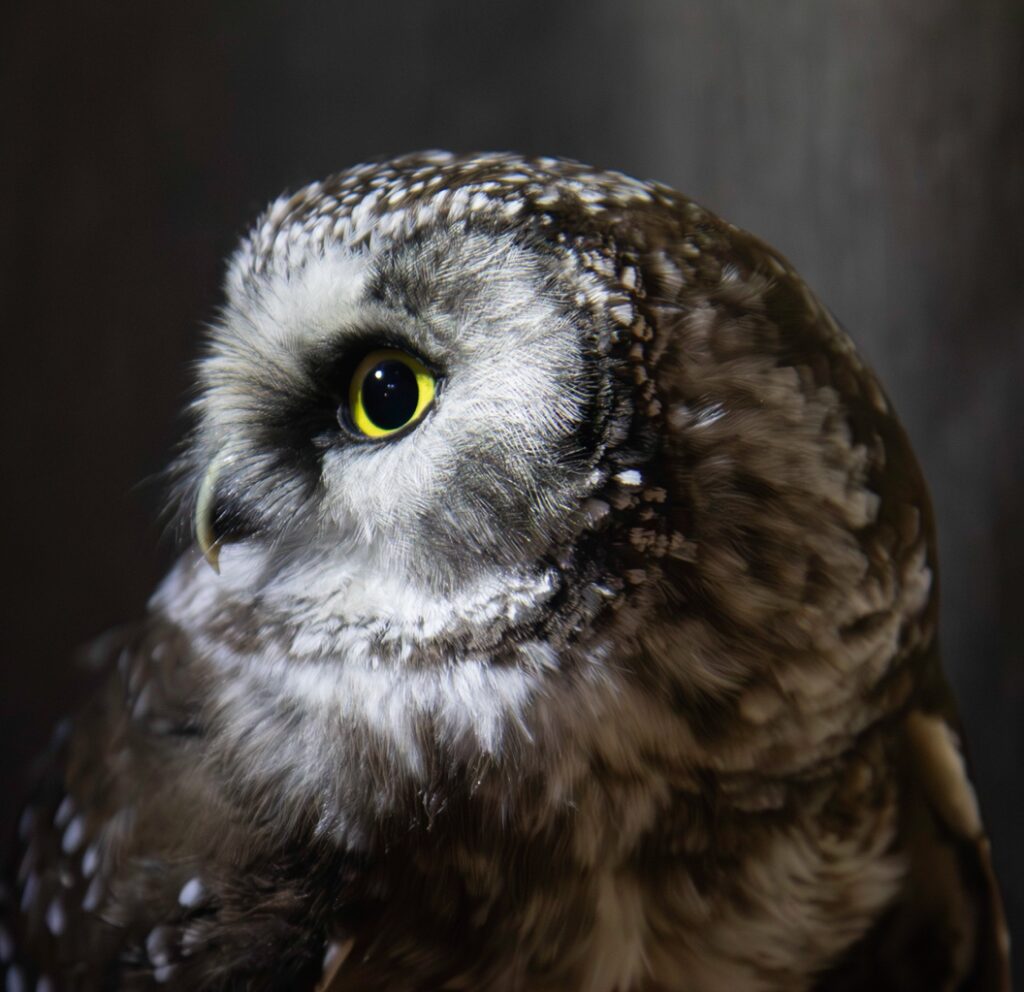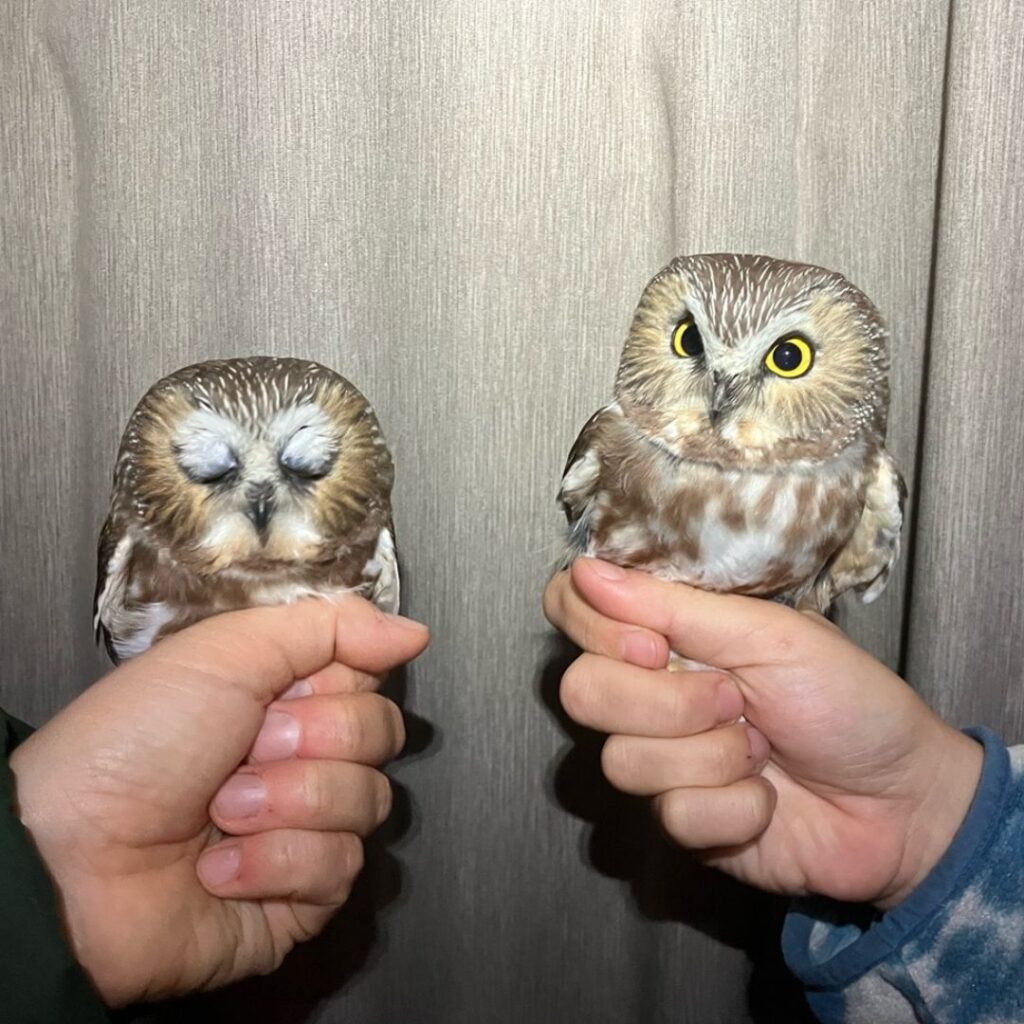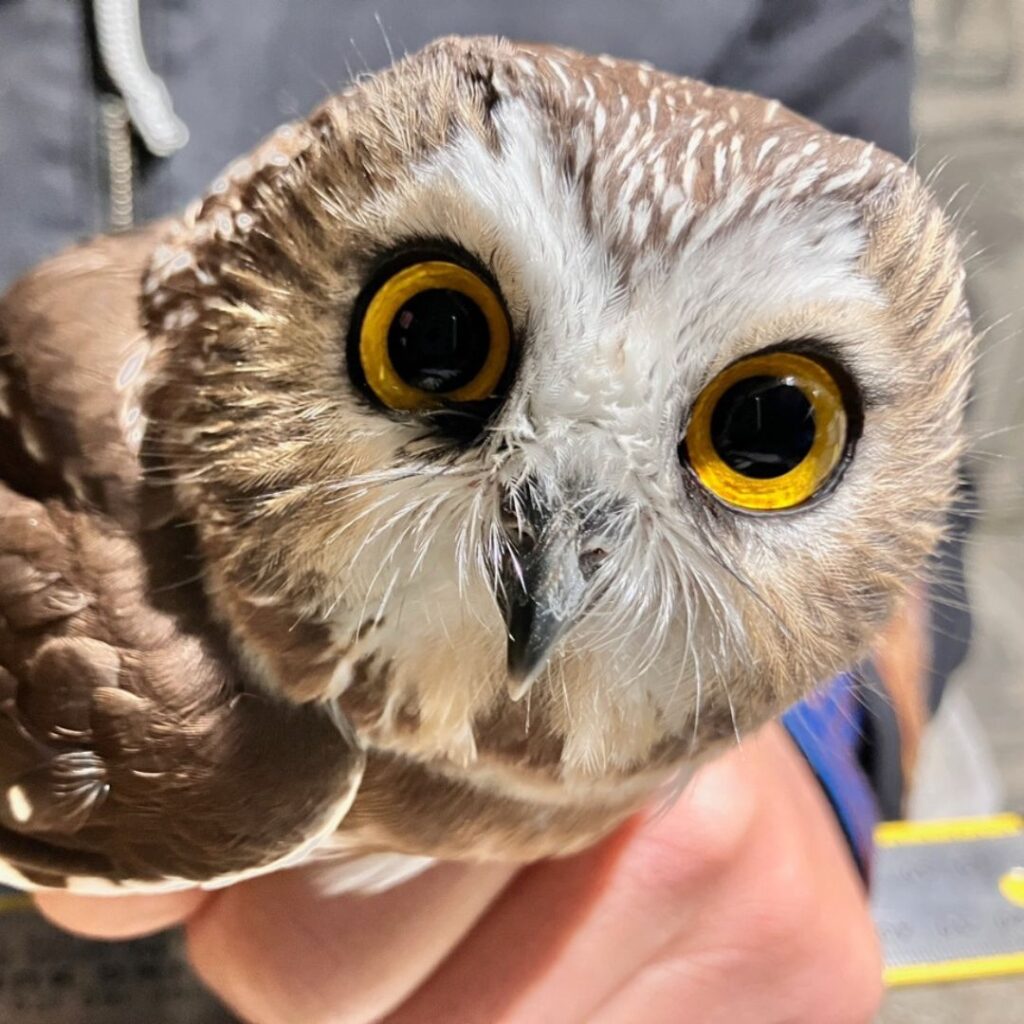3 October 2025
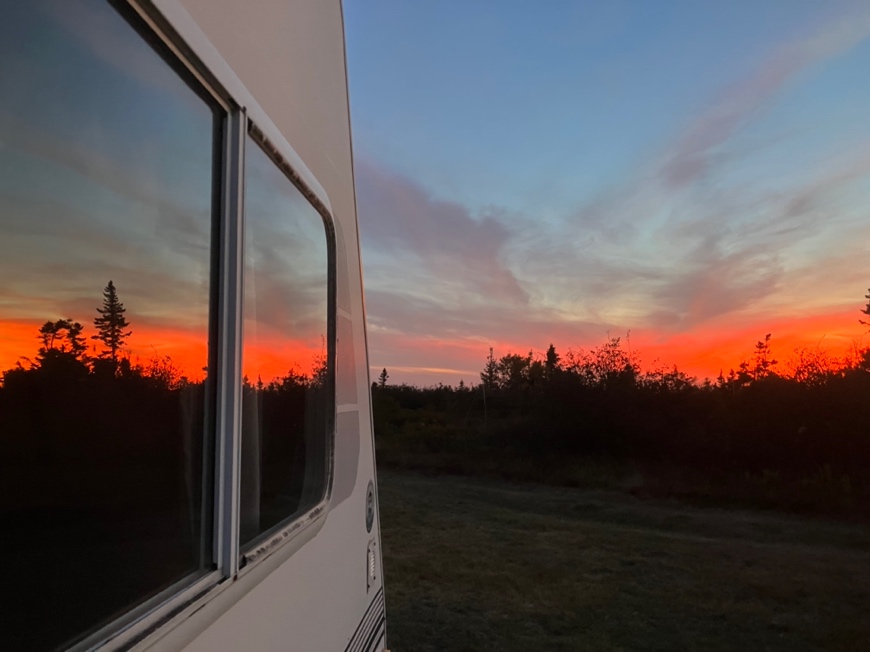
Owl banding at the Petit Manan Point station has begun! We—Coco and Tracey Faber—are the resident banders for the 2025 season. We are sisters who have been working with birds for the past decade, usually apart and occasionally together. After spending the summer doing seabird monitoring on two of Maine’s offshore islands, we are glad to be back on the coast whose pine-scented breezes tantalized us on our rocky shores. On Petit Manan Point, flocks of Cedar Waxwings converge on the abundant clusters of Mountain Ash berries, White-tailed Deer gather in the fields at dusk, and porcupines trundle throughout. On nights with low and steady north winds and clear skies, owls and many other bird species take off from breeding grounds in the boreal forest or other migration stopovers to move south towards their wintering grounds. Warblers, sparrows, thrushes, and shorebirds can all be heard calling overhead while we wait for Northern Saw-whet Owls to hit our nets.

The nesting effort of the Northern Saw-whet Owl closely follows prey availability on the breeding grounds. After a conifer mast year—when cone-producing trees synchronously drop a larger than average amount of cones—small rodent populations spike. With abundant prey the following spring, saw-whets lay larger clutches and sometimes raise several clutches in a season. While saw-whets can live up to 14 years in the wild, most have a shorter lifespan. As a result, saw-whet migration observations typically follow a four-year cycle: after a mast year, large numbers of hatch year birds disperse. The next year, more second year birds and fewer chicks leave the breeding grounds. In the third and fourth years after a mast year, progressively fewer birds migrate. Then the cycle begins again. Last year was a “big year” for saw-whets, so in the 2025 season we expect to see fewer birds overall, but a higher proportion of adults. In any year, we see far greater numbers of females than males, as females tend to disperse farther from the breeding grounds than males.
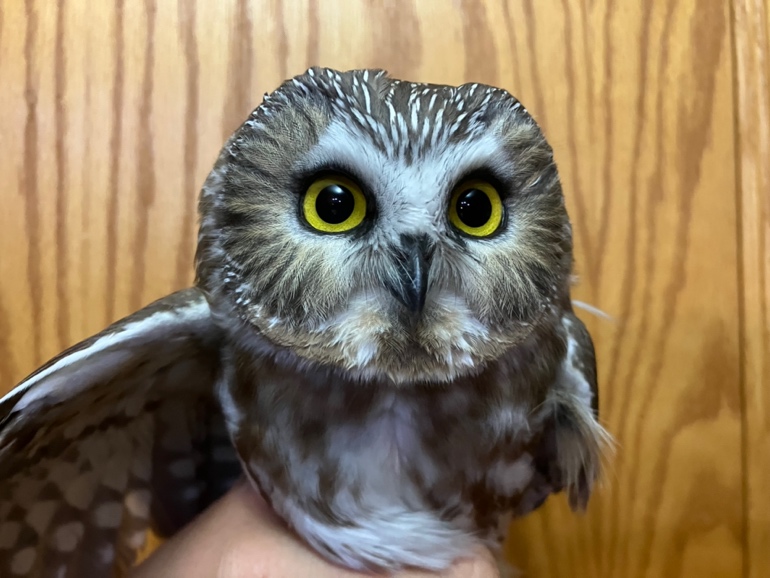
In our first week of banding, we captured at least one Saw-whet each night, and more when conditions were favorable for these lightweight, moth-like flyers to be carried to us on the wind. As of 3 October, we have captured 62 birds in total, including 49 definitive females and 5 males. 36 birds were hatch year, born this summer, and 26 were adults. We were also excited to catch one bird that was still molting out of its juvenile plumage, with tawny feathers remaining on its chest and flanks, leg feathers still emerging from their pin shafts, and a warm brown collar. While you can often tell a hatch-year in the hand by their movements—they are less adept at balancing and tend to put their wings out at all angles to steady themselves—this bird was particularly floppy, though more than ready to fly off again.
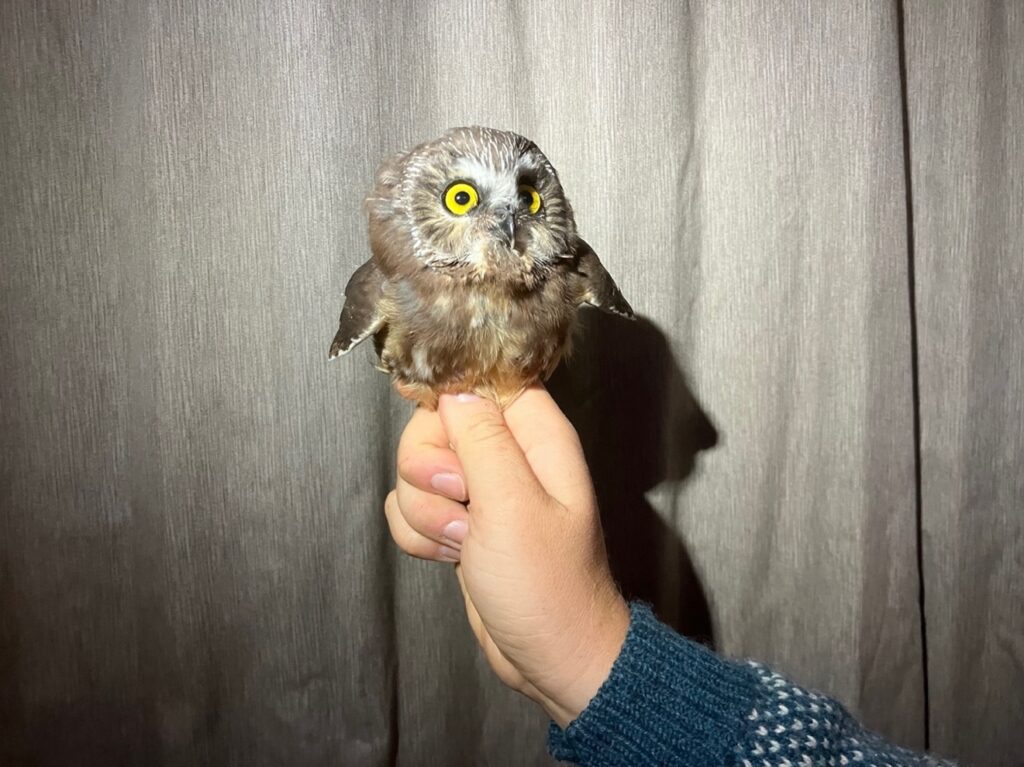
In 2025, we are continuing to deploy VHF nanotags that can be detected with the Motus network of receiver stations. When birds come within 15 km of a Motus station, their tag gets picked up by an array of receivers. Motus stations are now dense enough to give us a decent picture of how Saw-whets move during the non-breeding season. So far this year, we have deployed 8 tags on adult females and 2 on adult males. We will continue to tag adult Saw-whets throughout the season, with the goal of 15 individuals tagged. The Motus station at Petit Manan Point also picks up birds tagged through other projects, including individuals of 6 shorebird, 4 sparrow, 4 thrush, and 2 warbler species, as well as American Kestrels!
While most of what we capture are Saw-whets, attracted by a speaker playing a male breeding call, we also have a set of nets and audio lures devoted to two rarely encountered species: the Boreal Owl and the Long-eared Owl. Since 2015, 3 Boreal Owls and 7 Long-eared Owls have been captured at Petit Manan Point. Each time we check these nets, we know the likelihood of finding a bird of either species is low, but nevertheless, 20-30 times a night, we hold a small quiet, hope. In the wee hours of 2 October, my headlamp illuminated a large form in the net. Full of awe, we extracted a lean, quick-footed, softly hissing Long-eared Owl who weighed as much as 3 chunky Saw-whets. This owl had underwings the satin pink of ribbon candy, a caramel facial disk bordered in minute speckles, and body feathers so densely patterned that they blurred together in an excellent camouflage. After measuring and banding the Long-eared Owl, we released it back into the night. We always feel lucky to be here, whether or not we catch owls at all, but getting to experience this bird—the first Long-eared Owl caught at Petit Manan Point since 2021—was a nearly inarticulate joy.
Surely there will be more joy to come as the owl season continues!
- Coco and Tracey Faber
